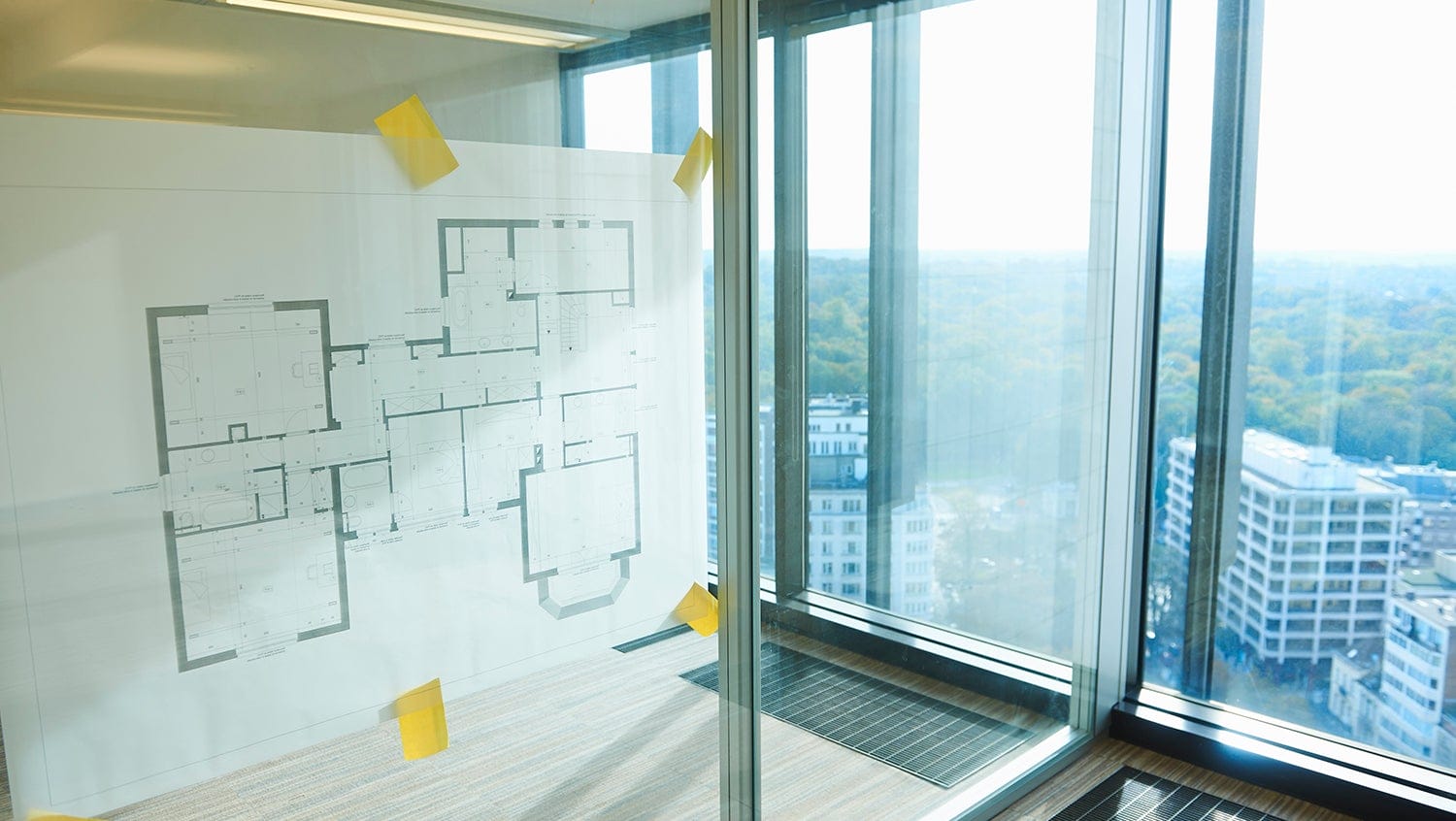‘Space Is a Luxury Not Everyone Has’: Discussion on Design’s Pivotal Role in Health Outcomes
May 21, 2020
By Meryl Bailey

Getty Images
A panel discussion on COVID-19 retrofitting underscores the necessity of investment in infrastructure both inside and outside the hospital to protect patients and respond to emerging needs.
The COVID-19 pandemic is revealing the lack of flexibility in capacity and adaptability of physical design at U.S. hospitals. With little time to prepare for a new disease that has no infection control guidelines, hospital administrators have confronted rigid historical architecture that makes finding additional space difficult or creates the task of building a field hospital from the ground up to care for an influx of severely ill patients.
MASS Design Group, a collaborative of architects and designers, focuses on designing transformative healthcare infrastructure in developing countries, but the nonprofit is now building a COVID-19 response team to help U.S. health systems facing the massive task of quickly retrofitting clinical spaces. The group recently hosted a panel discussion, “Architecture Can Heal: Adapting Healthcare Spaces in Response to COVID-19,” to highlight lessons learned as physicians and designers come together to reconsider space as it relates to health outcomes.
The panel included Michael Murphy, founding principal and executive director at MASS Design Group; Jessie Gaeta, MD, chief medical officer for Boston Health Care for the Homeless Program; Joshua Barocas, MD, infectious diseases physician at Boston Medical Center; and John Bucuvalas, MD, vice chair of faculty affairs at Mount Sinai Kravis Children’s Hospital. Neel Shah, MD, MPP, director of the Delivery Decisions Initiative at Ariadne Labs, moderated the conversation.
The discussion featured two case studies in clinical design: Mount Sinai Hospital’s transition of traditional health care spaces into COVID-19 wards, and a parking lot tent structure to quarantine or treat unhoused individuals erected by the Boston Healthcare for the Homeless Program (BHCHP). As COVID-19 lays bare the stark health disparities among U.S. populations, panelists continually underscored how physical space, or the lack of it, is not neutral. It can either hurt or heal.
“I think the major theme that has come out is that we’re asking people to physically distance — we’re asking people to take these measures that really are not just for their own health and protection, but for the protection and health of their community,” said Barocas during the discussion. “But we’re not taking into account that space is in fact a luxury that not everyone has, and that I don’t think our system is built for.”
As an infectious disease physician, Barocas served as an infection control consultant for BHCHP’s pop-up tent hospital structure on a large South Boston parking lot in late March. As it became clear that COVID-19 would disproportionately impact the city’s most vulnerable, officials moved swiftly to find shelter alternatives that could provide medical care for the sick and quarantine the infected. Using input from MASS Design’s experience in West Africa during the 2014 Ebola outbreak, BHCHP erected the MASH-like medical tents within two weeks of the initial conception. They reached patient capacity the day after opening.
Related read: Collaboration More Important Than Ever for Protecting the Homeless »
The structure is serving as a blueprint for other temporary field hospitals erected throughout the city to handle the potential overflow of vulnerable patients who lack shelter to quarantine. The irony is not lost on Dr. Gaeta, however, that these tents are needed in Boston, which has one of the most robust healthcare systems in the United States. The city is home to 18 hospitals, including 14 world-class teaching hospitals. Yet despite the abundance of healthcare resources and infrastructure, the COVID-19 crisis is furthering health disparities more than ever before.
“The poor health that we see is magnified so much for people who lack housing. It’s just so evident from this particular pandemic how space, or a lack of space, the inability to socially or physically distance — it’s just so dramatically shown with this particular population,” said Gaeta.
Rethinking the impact of the design of healthcare spaces also means addressing the areas that people inhabit daily, explained Murphy.
“We are all undergoing this massive paradigmatic change, where we recognize that the space around us, as individuals, as we isolate here in our homes, has the potential to infect us, to injure us, but also on the flip side, to potentially heal us, to help us breathe better, to provide safe, uncontaminated air,” he said.
Studies continually link inadequate housing with poor health outcomes. Respiratory illness, asthma, lead exposure, and mental illness all have roots in substandard housing. Five percent of hospital users are responsible for half of the healthcare costs in the United States, and many of those patients are living below the poverty line and are housing insecure. Investing in affordable housing and community revitalization is an emerging priority for hospitals across the nation who are interested in lasting better health for their patients. In 2017, Boston Medical Center invested $6.5 million to support community partnerships and affordable housing initiatives in local neighborhoods. It became the first hospital in Massachusetts to put all of its required community health investment into this one social determinant of health.
Related Read: A Smarter Policy Approach to Housing Insecurity »
As COVID-19 forces health systems to rethink the design of hospital infrastructure, the pandemic is also underscoring the need for investment in safer and more equitable spaces.
“If we had a trillion dollars to invest in spatial redesign, I think the most bang for our buck would be in community spaces that have a profound impact on health. Those spaces are, most importantly, housing, schools, shelters, prisons, and community spaces in general,” said Gaeta. “In addition to really wanting space to promote health and decrease transmission of infectious diseases, we need space to promote community, be dignified, and give people hope.”


